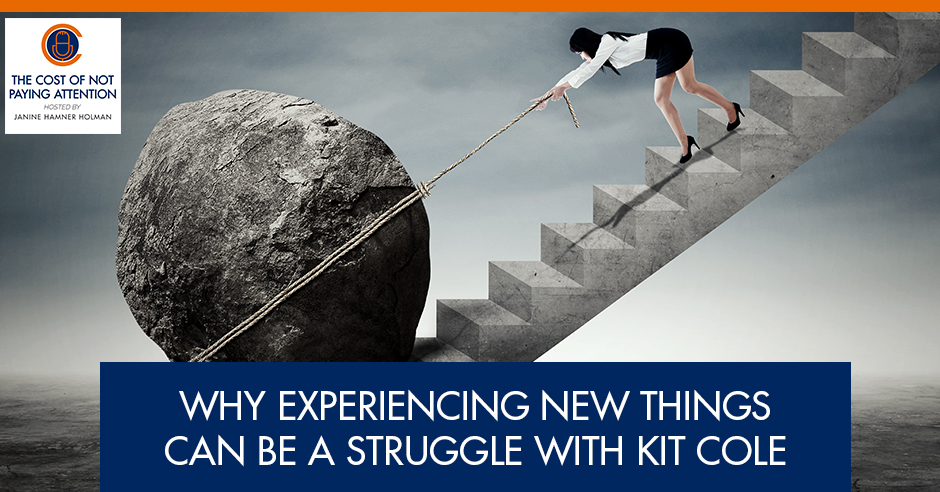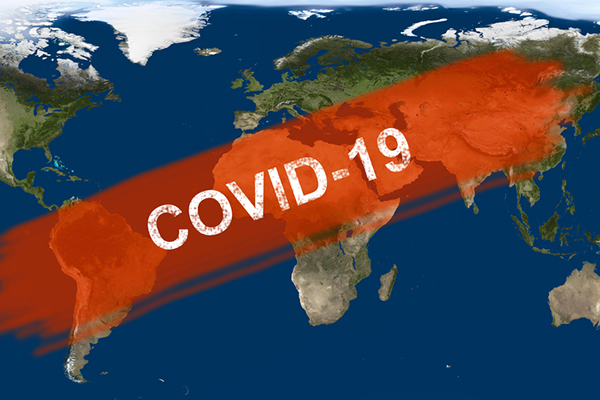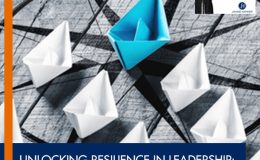
The current COVID-19 pandemic has thrust everyone in the world to face a new normal. But just like anything that we encounter for the first time, adjusting to what is new can be a great struggle. Why is it? In this episode, Janine Hamner Holman and Kit Cole give us an answer. Viewing it from a brain science perspective, Janine talks about the way our brain reacts in uncertainty and threat, highlighting why it is natural for us to be afraid. Furthermore, even with that, it is also important to remind ourselves that we can also manage this fear we are all feeling. Janine and Kit share some ways that can help us cope with this global crisis.
—
Listen to the podcast here
Why Experiencing New Things Can Be A Struggle With Kit Cole
We have a special guest here, who is my partner in crime in business and all things, my BFF to the grave, Kit Cole. She has been monitoring our questions from our audience about what’s going on in this COVID-19 world. She and I are going to have a chat about that. We’re probably going to lay down a couple of these episodes. This was the first. Kit, welcome to show.
Thanks, Janine. We have a lot of questions from clients and from the audience who have been tuning in to your show. You can imagine what these questions are because we’re all in the same boat right now. What I’m seeing in terms of consistency in the questions are people feeling very unsure not just their day-to-day life, but how they’re going to get back to normal and is there going to be a normal? All of us to different degrees are scared and are feeling afraid and uncertain about what comes next. If I’ve learned anything from you over the years, because you’ve taught me a lot about my brain, people don’t do well in that situation. Maybe we could start the conversation for our audience with you talking a little bit about people being in that state of being afraid.
I don’t know about you, but this is the first global pandemic that I’ve ever been through and it is normal for us to be afraid. This is scary. Part of what’s important in all of this is to normalize what we’re feeling, to understand that it’s not that we don’t have good coping mechanisms or it’s not that we aren’t getting enough sleep or it’s not that we’re freaked out because of the kids or the parents or the money or the whatever. This is scary. It’s reasonable for us to be afraid and concerned. What makes this all trickier is that the human brain cannot stand uncertainty. Uncertainty to our brain feels like physical pain. Our brain will do just about anything to make it stop if it started and make it not happen.
One of the main functions of our brain is to keep us safe. If our brain is all about keeping us safe, things that are uncertain, which has also anything new is going to be scary. We are now in a land where things are scary and where everything is new. I’ve never been through a situation where all of the movie theaters, all of the sports arenas, all of the restaurants that we normally go to, all of the businesses have closed and where everyone is freaked out about toilet paper. We are in a continuous state of uncertainty and all our brain wants to do is to make it stop.
Our alarm system is what moves us into action. Share on XUnfortunately, if we’re going to keep living, the only way to make it stop is to get a couple of things that we’re going to talk about. Before we move to that, I want to talk about the three levels of threat that happens in your brain. The first level of threat is something is off in the distance. You’re aware of it, but it’s not concerning for you. In this COVID-19 world, that’s when the virus was in China. If you think about humans 30,000 years ago, that’s when we were out on the Serengeti and you could hear a lion, but it was off in the distance or you’re going to have a challenging conversation with somebody at some point. There are a threat and danger, but it’s not happening anytime soon.
Your threat alarm starts being on alert, but your alert alarm has not rung. It’s silent. In that first state, you can get things done. You can be a little bit creative. You can get tasks done. At the next stage, you stop being able to be creative. The next stage is, in the COVID-19 world, the virus is in the United States, which is where most of our audience is. If you’re not in the US, the virus is in your country. It’s a lot closer. Back to the Serengeti, the lion is on the other side of the mountain. You know exactly where the lion is and how long it might take the lion to get to you. At this point, we cannot be creative. We can still get specific tasks done. We’re probably not going to forget how to boil water, but that’s about our level of functioning because our threat alarm is on hypervigilance. There is a threat.
Our alarm is on high alert because it’s in the neighborhood. At threat level three, essentially the lion is in the house. At this point, in COVID-19, you know people who are getting sick and you’ve been around them. Your physical health is now in danger. If your physical health is in danger, you’re now putting your family in danger. The threat is real. At this point, you can’t do anything. Your prefrontal cortex, which is all of where our actual thinking is done, has shut down. There are other bodily functions that interestingly have also shut down. Your digestive system has entirely shut down. Your reproductive system has entirely shut down because we don’t need to digest food or make babies if there’s a lion in the house. All you need to do is scream and run up a tree. Those are the only functions that are available to you.
The problem is we have been functioning at a lot of those threat levels. We vibrate from threat level one up to threat level two, back down to one, up to three back down to two. The challenge is to get us out of threat level and at least back to normal. We don’t have to be joyous. We don’t have to be fabulous, but we at least have to be normal, which is where we can start to be creative, to start to think long-term and our energy starts to come back. One of the things that I know some people have been wondering is, “Why am I so tired?” Because you’re operating at a threat level and metabolically it’s taking a lot more energy. Before I move on, I want to check-in and see if you have any questions before we start talking about what we need to move out of threat levels.

Experiencing New Things: What’s important in this COVID-19 pandemic is to normalize what we’re feeling and to understand that it’s not that we don’t have good coping mechanisms; this is, in fact, scary. Thus, it’s reasonable for us to be afraid and concerned.
Can you run them through 1, 2 and 3 again? One is the lowest level and three is the highest that they’re very clear on. You talked about one, but then you went to the second one and didn’t name the two.
There are three levels of threat response. The first is the threat is in the distance. Here we can get work done. We aren’t super creative. We can be a little bit creative, but we’re not super creative. The alert system is on, but the alarm system is off. At threat level two, the threat is in our environment. Here we’re attuned to the threat. Our alert system is hypervigilant and our alarm system is on high. At threat level three, the threat is right here, right now. The alert system is going crazy and our alarm system has spiked.
Can you run them through the difference between the alert system and the alarm system so they know what that means?
The alert system is essentially a system that scans our environment at all times and is looking for, “Am I safe? Am I going to need to fight, flight or freeze?” Am I going to need to run? Am I going to need to beat you off or am I going to need to freeze in place because there’s a Tyrannosaurus rex and they can only see motion? That is what our alert system is doing. It’s constantly scanning for, “Am I safe?” Our alarm system is what moves us into action. It’s what says, “We have to take action right now.”
Any time we're going to take on something new, we, in general, as humans aren't good at it. Share on XCan you go back to, anything new is scary, and talk through that a little bit?
Anytime we’re going to take on something new, we in general as humans aren’t good at it. Anytime we’re trying something for the very first time, we don’t know how to do it and we don’t like it. Our ego does not like it when we don’t do things well. Because we’re not doing it well, it also triggers, “I’m not safe.” If I can’t do this well, if I can’t master it, as far as our brain is concerned, we might die. Even if all I’m trying to do is learn how to make spaghetti carbonara. Our instincts say, “If I can’t do this and can’t do it well, I might die.” Usually, this only happens to women. If we’re walking down the street and there was a stranger in front of us with their tag sticking out, we want to stick her tag back in her shirt. We want to do it because our unconscious brain says she’s not safe with her tag sticking out.
It’s ludicrous and cray-cray but that’s what our brain says. If somebody who’s that physically close to us isn’t safe, we probably aren’t safe either. It’s not that we’re altruistic, wonderful human beings that want to make sure everybody else is safe. Fuck no. We want to make sure that we’re safe. That’s all our reptilian brain, the amygdala, cares about, “Am I safe?” If your tag is sticking out and you’re right next to me and you’re not safe, therefore I’m not safe. Your tag better be sticking in, girlfriend. Anytime we try something new, we’re not good at it. Therefore, we’re not safe. Our brain doesn’t like it.
Anytime we try something new, we’re not good at it. Brené Brown, who I adore, has a saying for this, an acronym. It’s called an FFT: Fucking First Time. For writers, she has an SFD: Shitty First Draft. It’s FFT, Fucking First Time because we’re not good at it and it sucks. It sucks to not be good at things. We don’t like it. For those of us who are like, “I have this in spades. I have and I got it.” Whatever that is, I got it. I can handle it. I’m all over it. Whatever you need, I can do that. To not be good at something and to have it be clear that I’m not good at it, it’s threatening to our ego and it’s threatening to our reptilian amygdala brain.
This is all new to us. Talk about it relative to COVID.

Experiencing New Things: The COVID-19 pandemic is affecting our lives in ways that are new. It is making us all be six feet apart, making us all wear masks, and making us all rest.
COVID, I remember when all this started. Kit, we were having brunch and you said to me, “Are you worried about this COVID thing?” This was still in China. I said, “No, not at all.” I had a conversation that night with my mom and I said, “Mom, are you worried about this?” She said, “No, not at all.” Within 48 hours, maybe it was basketball that first shut down. I thought, “This is weird. Why are they doing this? We’re coming up on the NCAA championships. They’re not going to shut down those events. Those are major revenue sources. Why are we doing this?” Everything else started shutting down. Part of what was so hard to understand for some people still, for me less so now, was what’s so different about this pandemic.
I’m not a doctor and I am not a brain surgeon. What we know is that this is way more contagious and it lives longer on surfaces. It’s way more deadly than other things that have been out in the environment that we’ve lived through. Whether it’s SARS or the avian flu or other scary pandemics that came across, nothing like this happened. Here we are in this very different circumstance. It’s not only that there’s this thing called COVID-19 out there that is a new virus that our bodies don’t have antibodies to fight against. It’s also that it’s affecting our lives in many other ways. It’s affecting our lives in ways that are new. It is making us all be six feet apart. It’s making us wear masks.
Important Links
About Kit Cole
 Kit Cole, the founder of Kit Cole Consulting, brings more than 25 years of experience in the public and private sector, with proven experience in the utility and waste industries as well as government sectors.
Kit Cole, the founder of Kit Cole Consulting, brings more than 25 years of experience in the public and private sector, with proven experience in the utility and waste industries as well as government sectors.
Prior to opening her own firm, Kit served as a Director of Public Affairs at Southern California Edison, one of the largest utilities in the nation. At Edison, she was responsible for the Public Involvement and Education group promoting outreach and community engagement where high-voltage transmission lines and substations intersected with communities.
Before coming to Edison in 2011, she served for seven years as Director of External Affairs at Waste Management, Inc., where she developed and implemented strategies around community engagement on a variety of landfill and recycling facility issues, focusing on landfill expansion in the West. She also oversaw the company’s Sustainability Initiative in the Western Region, including improving internal recycling rates, promoting green power, conducting energy audits, and improving recycled content procurement.
Kit gained an important perspective from her government service by working in both the policy and regulatory arenas prior to moving to the private sector. In 2001, she was appointed by Governor Gray Davis to the California Environmental Protection Agency, where she advised and directed regulation in the area of electronics waste, brownfield development and environmental justice.
As Policy Consultant to Senator Debra Bowen and the Assembly Natural Resources Committee in the California Legislature, she focused on green buildings (LEED certification for state buildings), tire recycling and reuse and beverage container recycling. In addition to natural resources policy, she has a history with local governments from serving as a policy consultant to the Assembly Local Government Committee. Her focus in local government policy included work on cities and counties organization, the Brown Act and post-Prop 13 funding.
Kit has her Bachelor of Arts from the University of California at Davis and her Masters of Public Administration from the University of Southern California. She is a nationally elected member of the Board of the International Association for Public Participation USC (IAP2) and a member of the Association of California Women in Energy (CAWiE).





